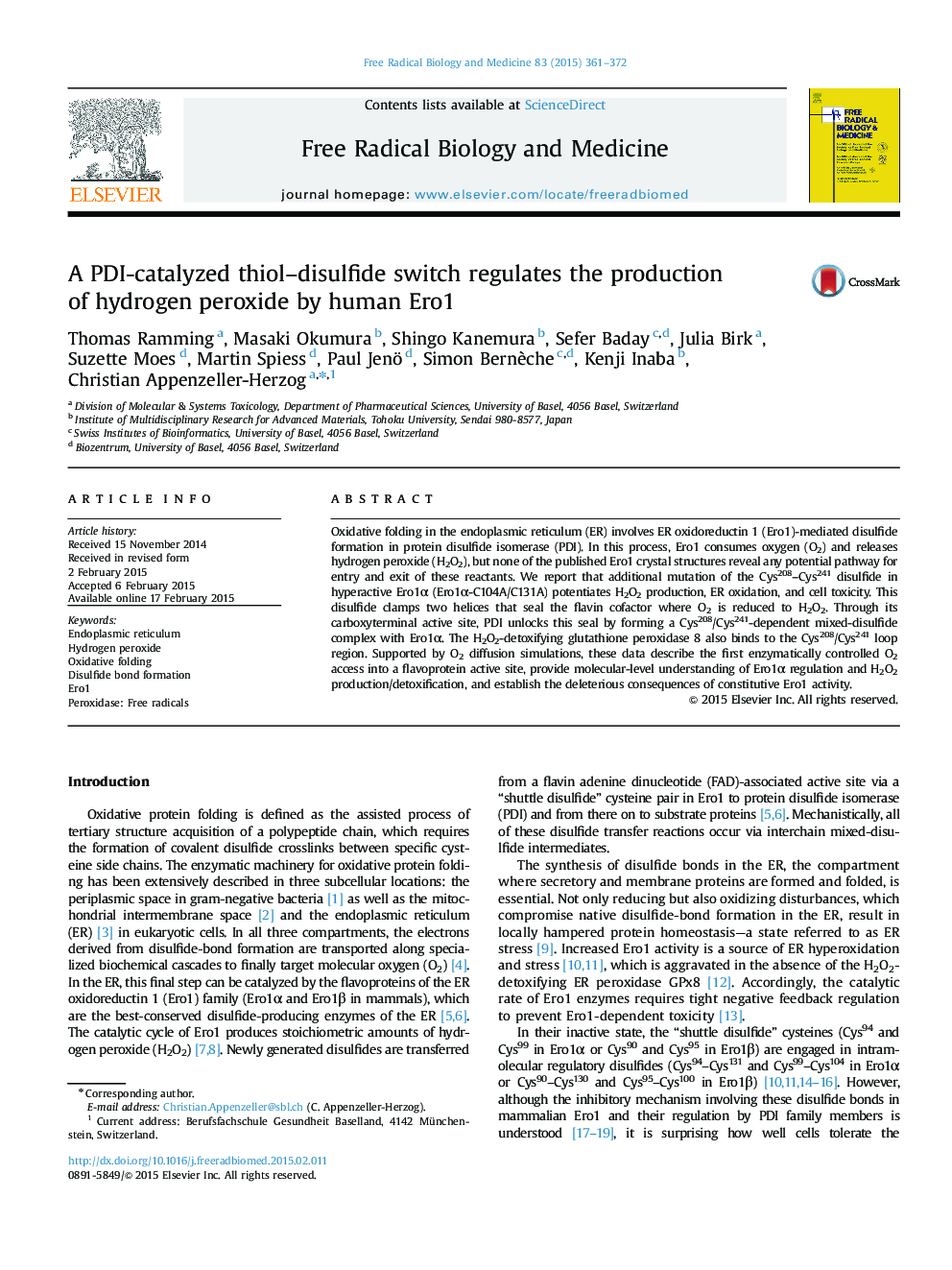| Article ID | Journal | Published Year | Pages | File Type |
|---|---|---|---|---|
| 1907945 | Free Radical Biology and Medicine | 2015 | 12 Pages |
•The regulatory Cys208–Cys241 disulfide in Ero1α is opened by PDI.•Ero1α devoid of all regulatory cysteines displays lethal levels of oxidase activity.•The Cys208/Cys241 switch regulates O2 access to the active site.•Binding of GPx8 to the Cys208/Cys241 region ensures detoxification of produced H2O2.
Oxidative folding in the endoplasmic reticulum (ER) involves ER oxidoreductin 1 (Ero1)-mediated disulfide formation in protein disulfide isomerase (PDI). In this process, Ero1 consumes oxygen (O2) and releases hydrogen peroxide (H2O2), but none of the published Ero1 crystal structures reveal any potential pathway for entry and exit of these reactants. We report that additional mutation of the Cys208–Cys241 disulfide in hyperactive Ero1α (Ero1α-C104A/C131A) potentiates H2O2 production, ER oxidation, and cell toxicity. This disulfide clamps two helices that seal the flavin cofactor where O2 is reduced to H2O2. Through its carboxyterminal active site, PDI unlocks this seal by forming a Cys208/Cys241-dependent mixed-disulfide complex with Ero1α. The H2O2-detoxifying glutathione peroxidase 8 also binds to the Cys208/Cys241 loop region. Supported by O2 diffusion simulations, these data describe the first enzymatically controlled O2 access into a flavoprotein active site, provide molecular-level understanding of Ero1α regulation and H2O2 production/detoxification, and establish the deleterious consequences of constitutive Ero1 activity.
Graphical abstractFigure optionsDownload full-size imageDownload high-quality image (106 K)Download as PowerPoint slide
